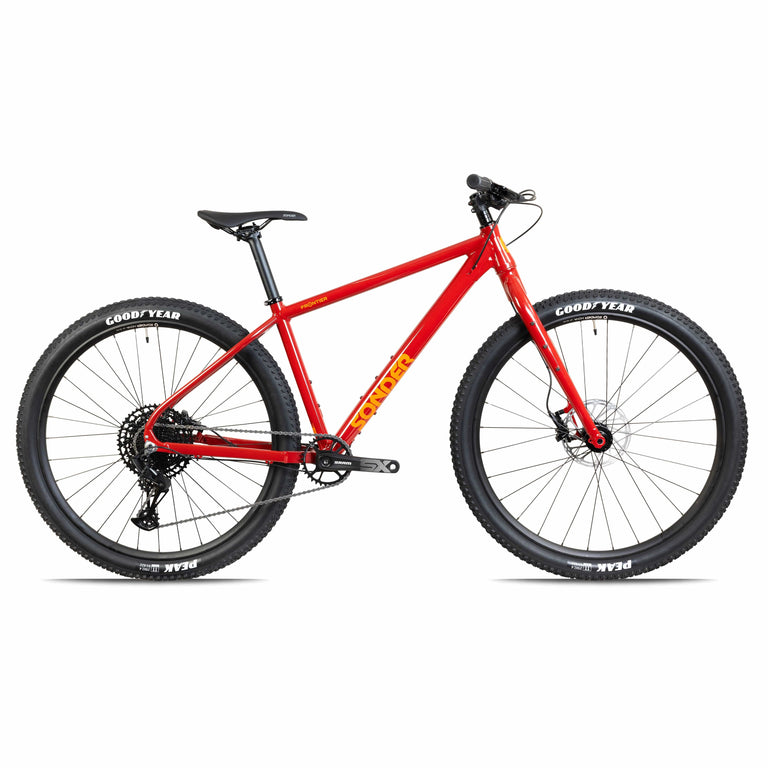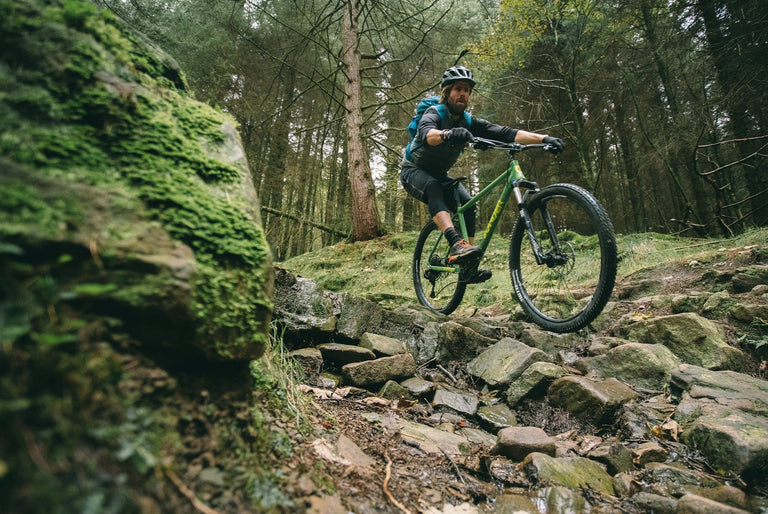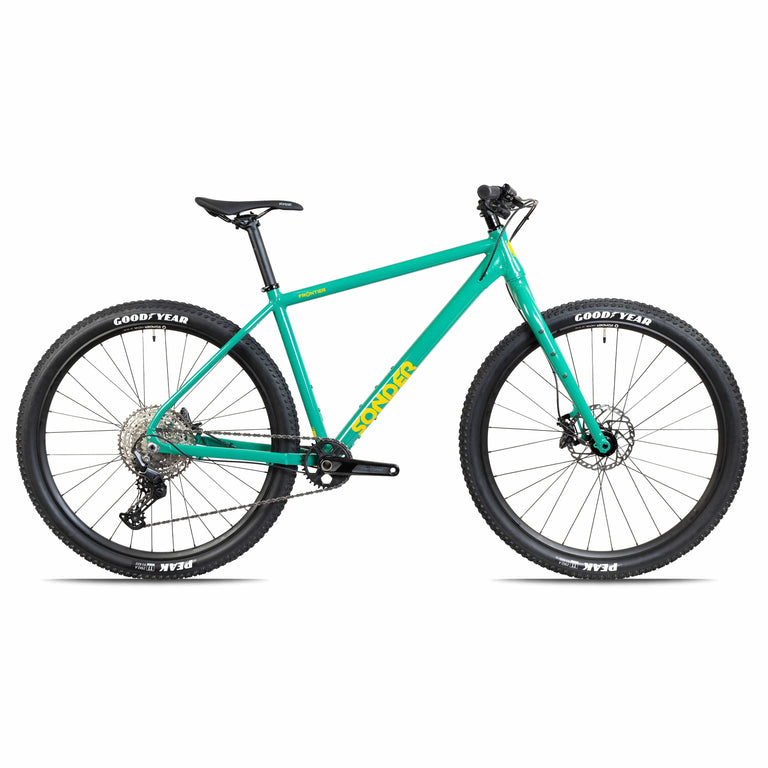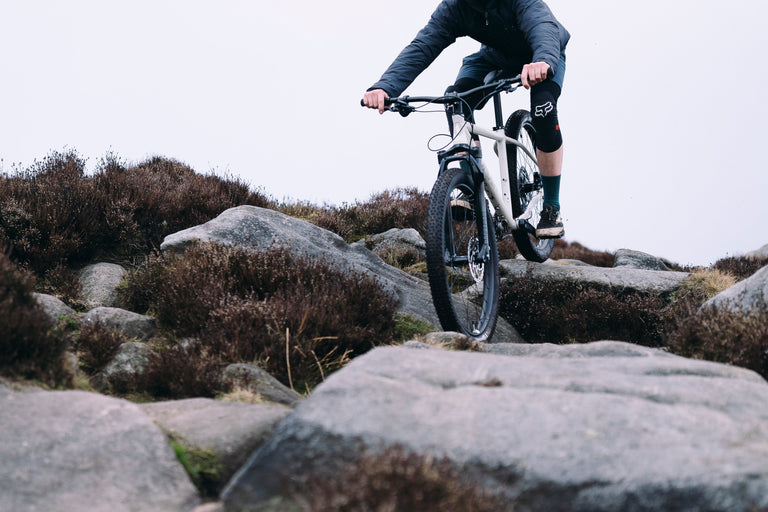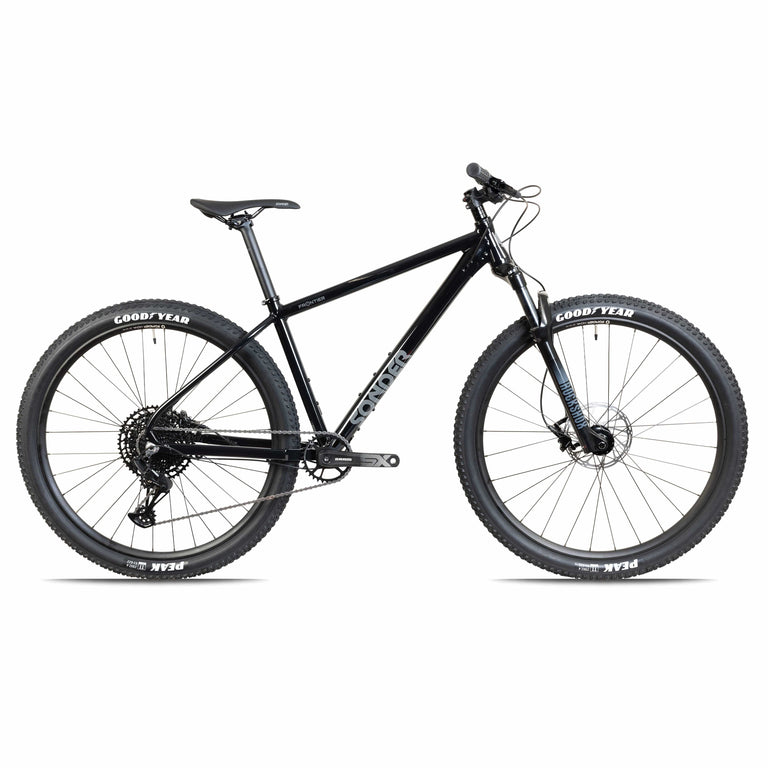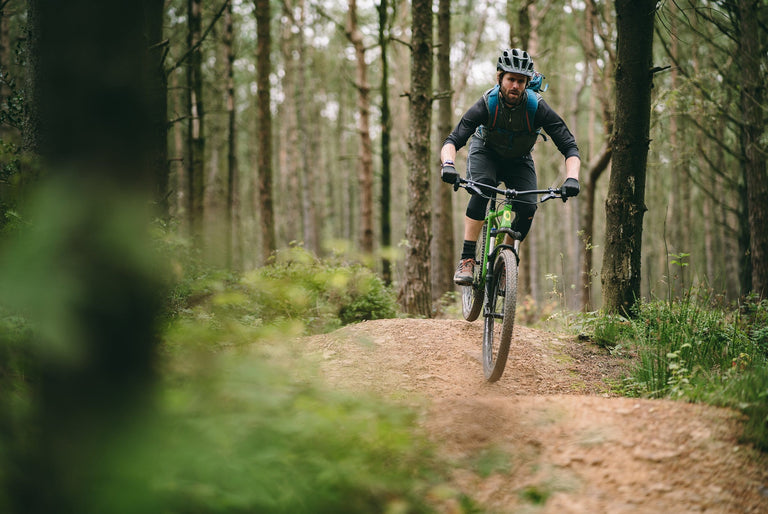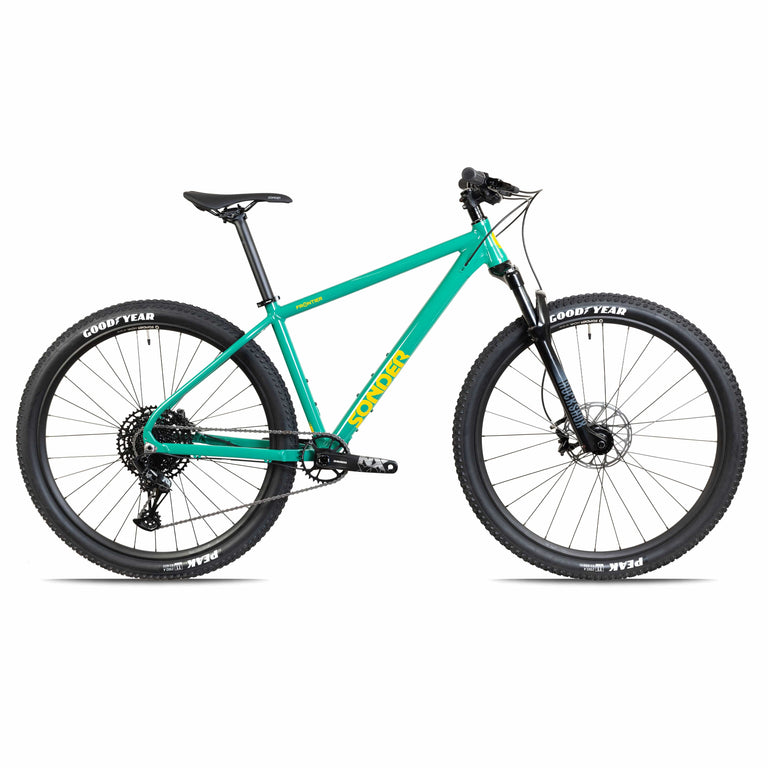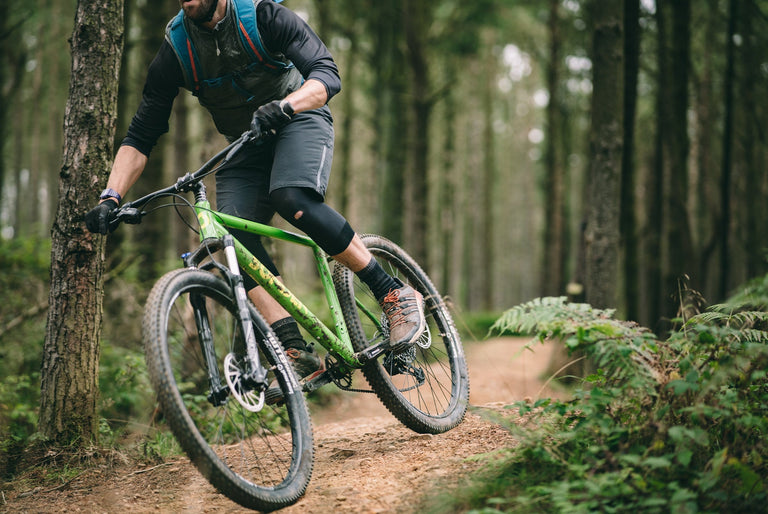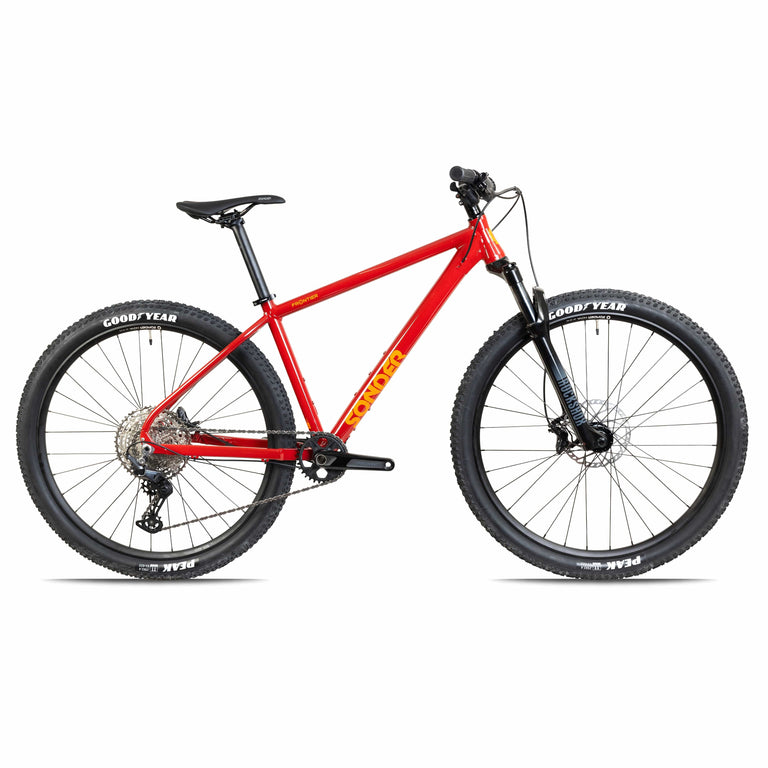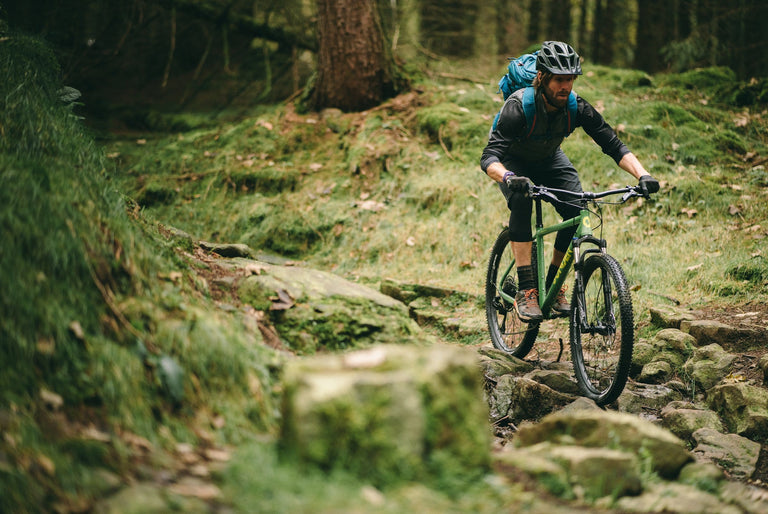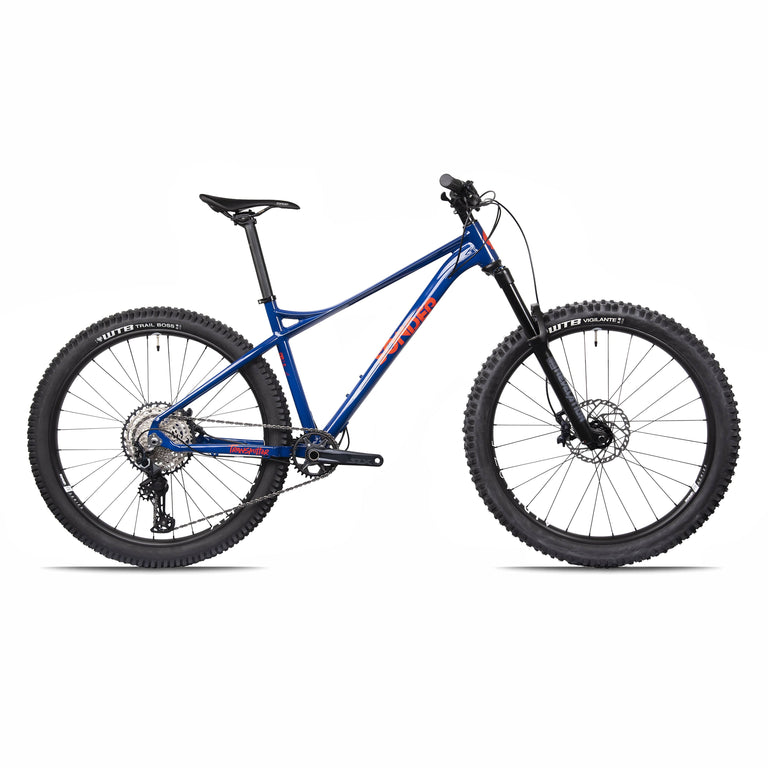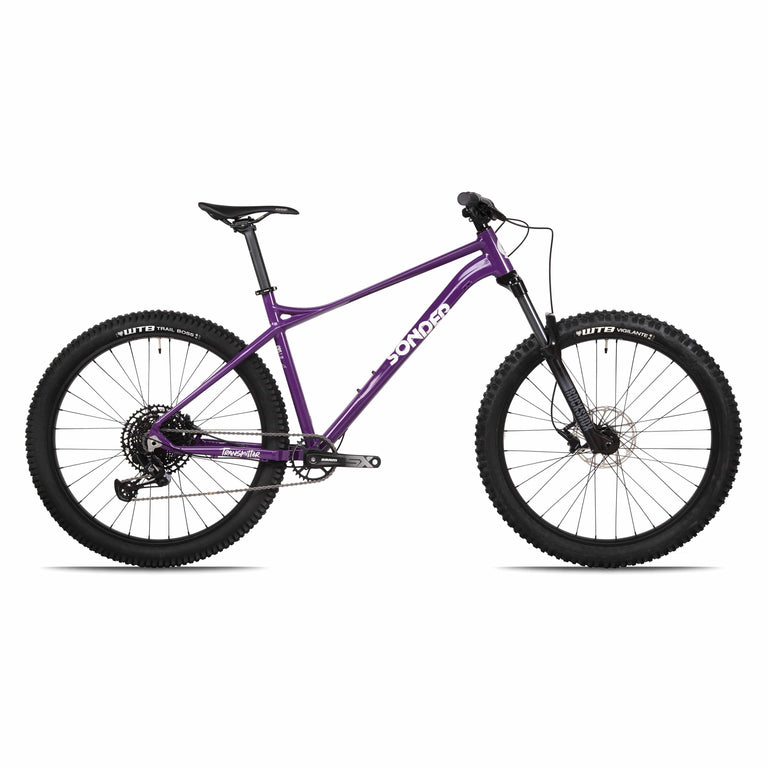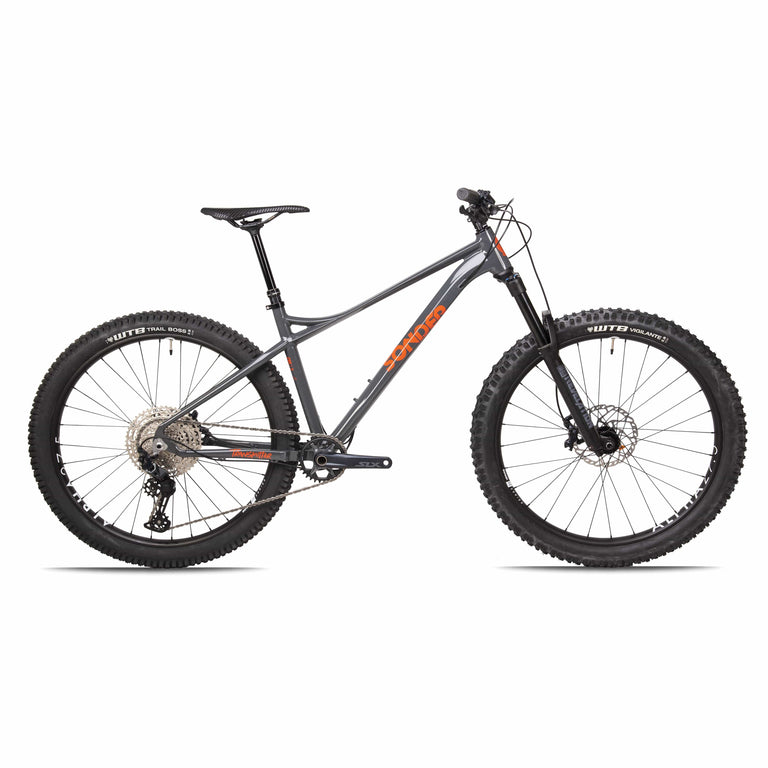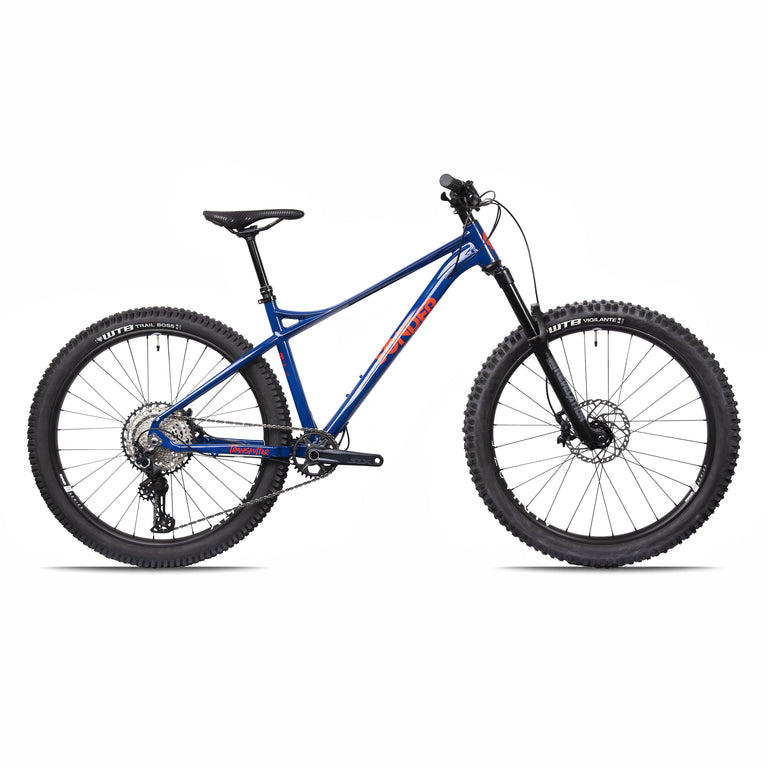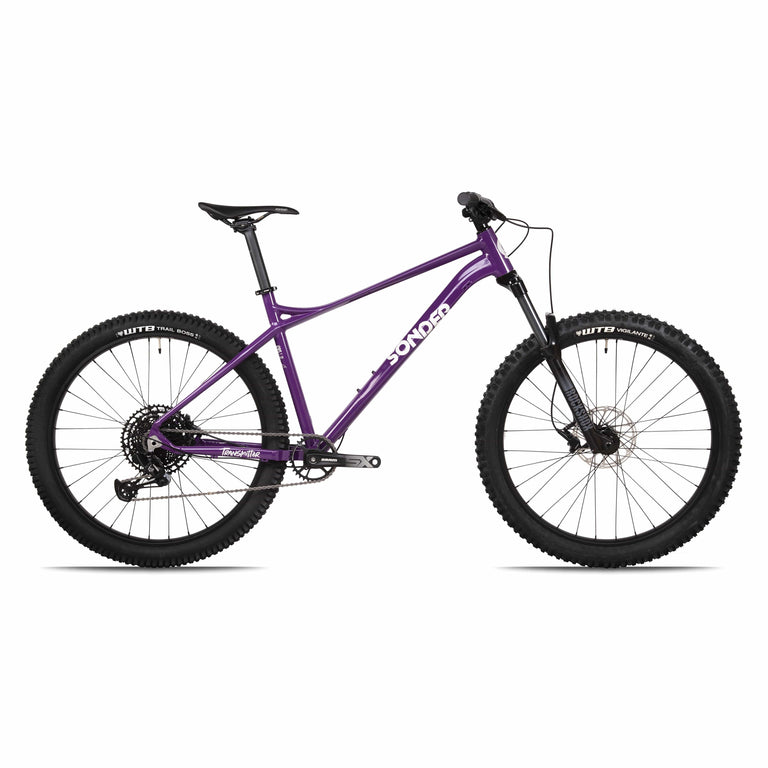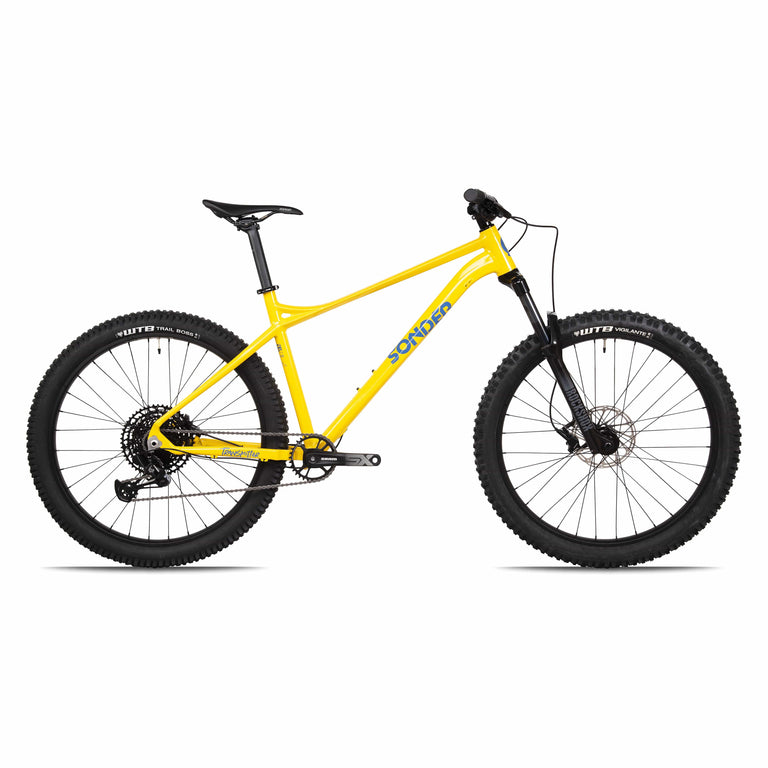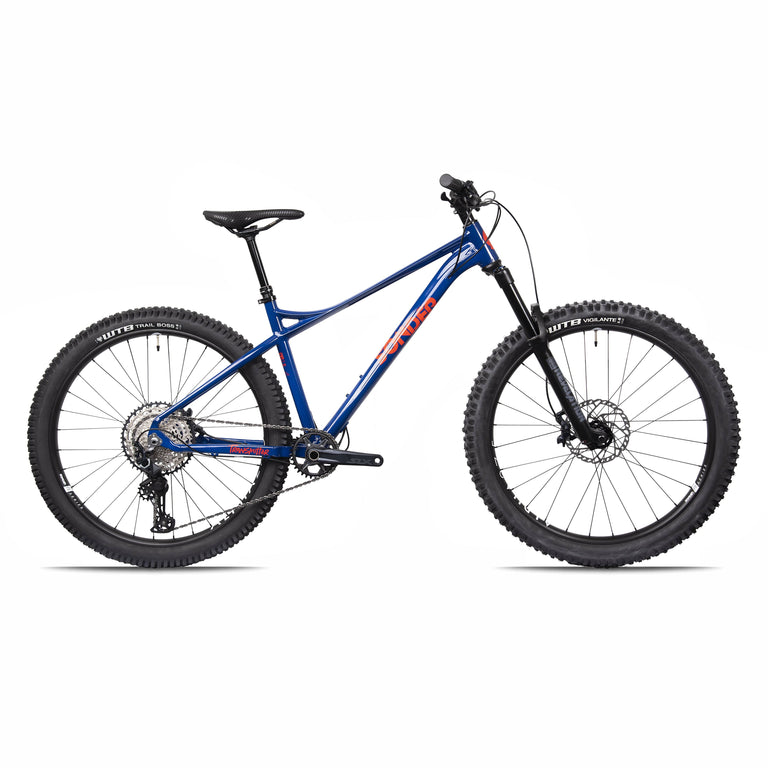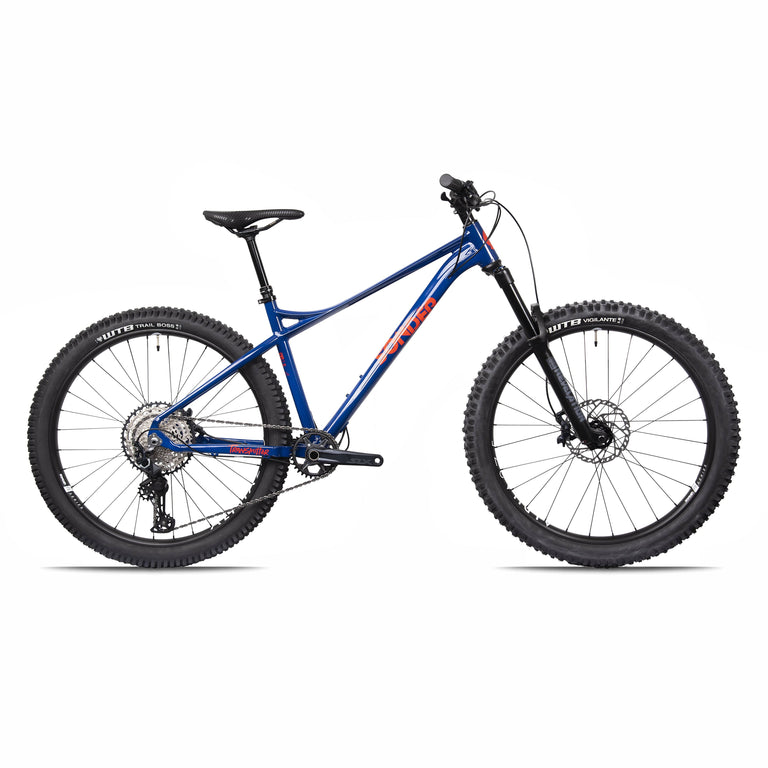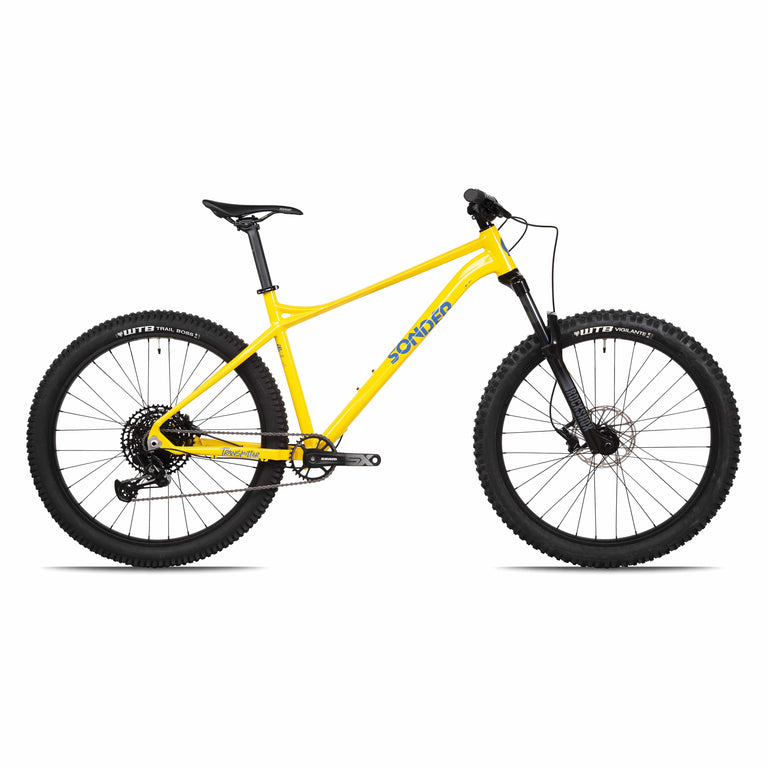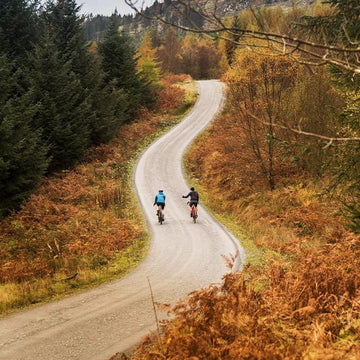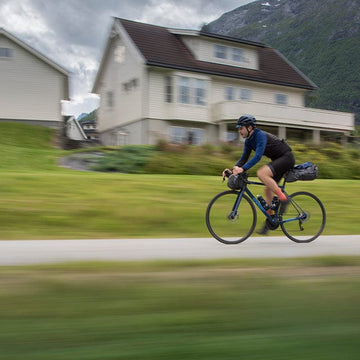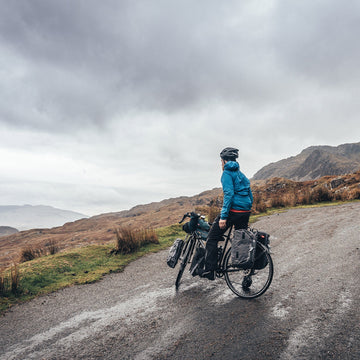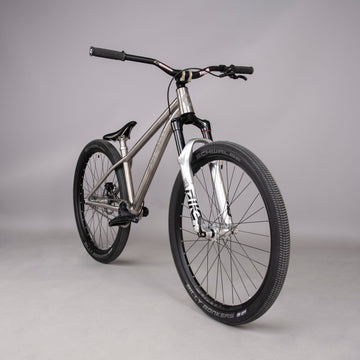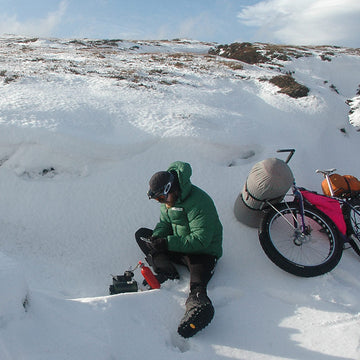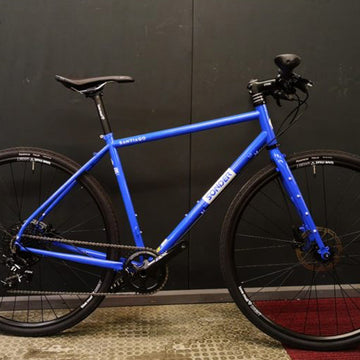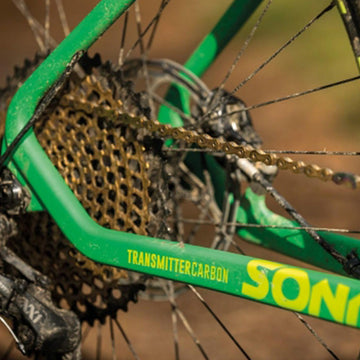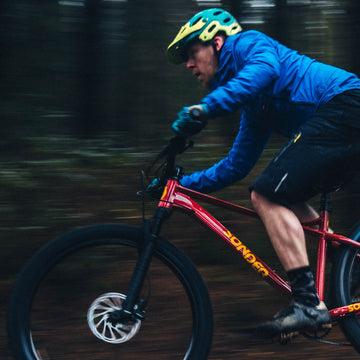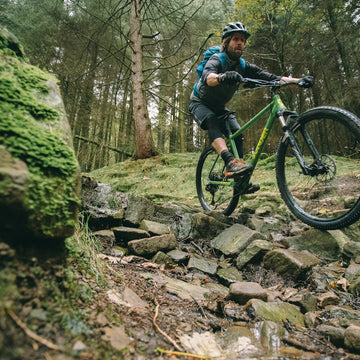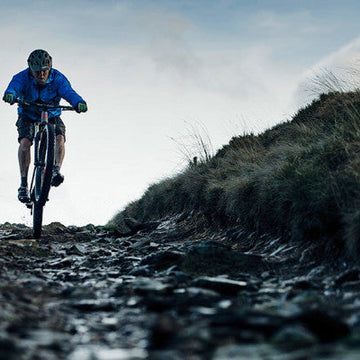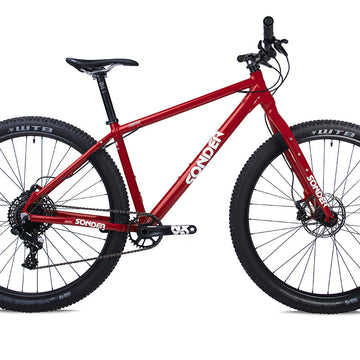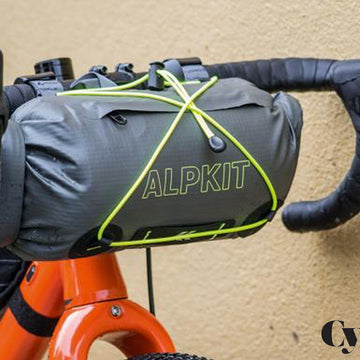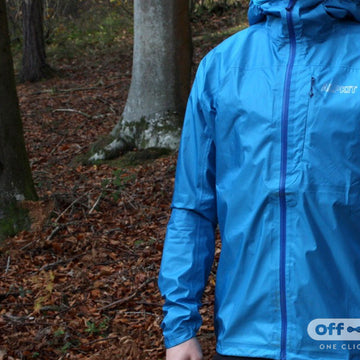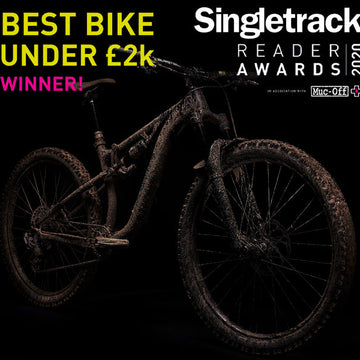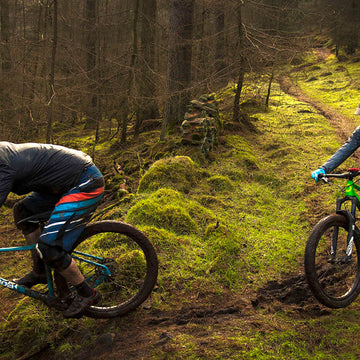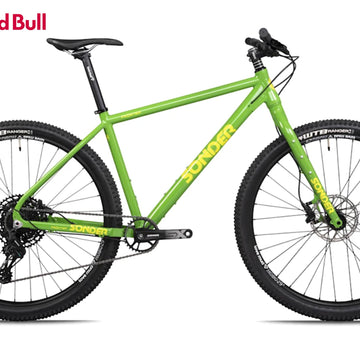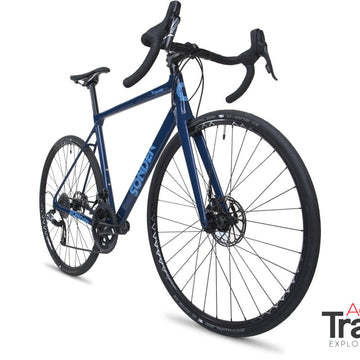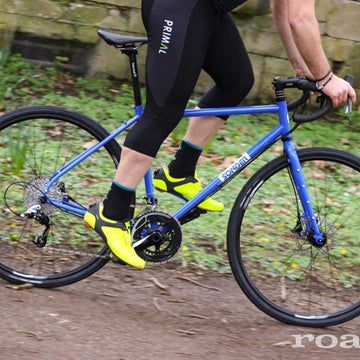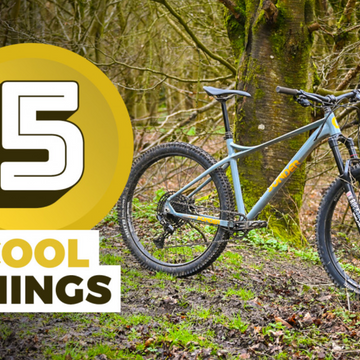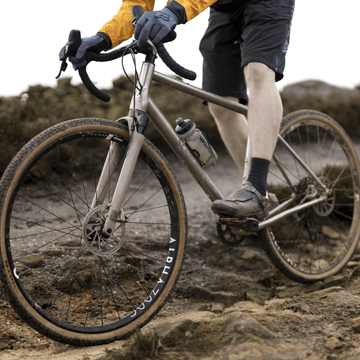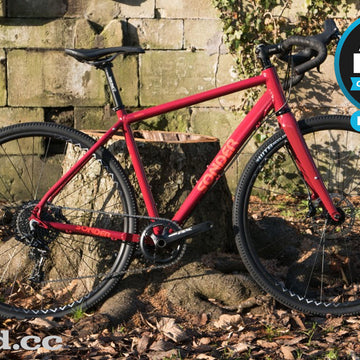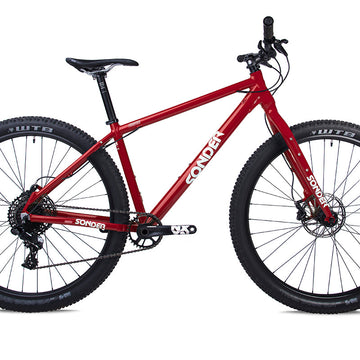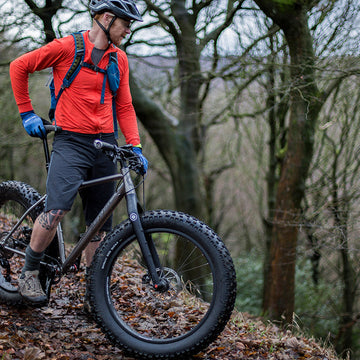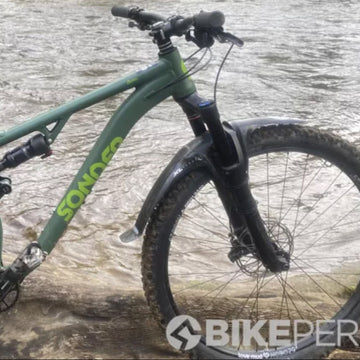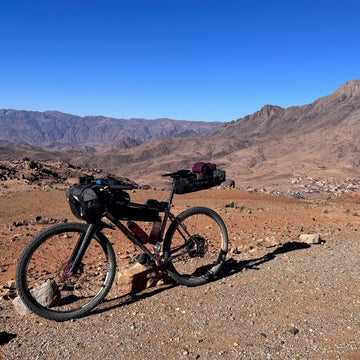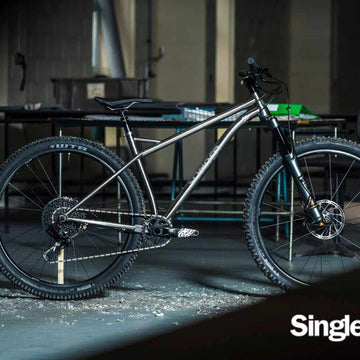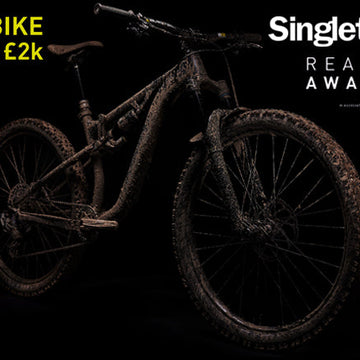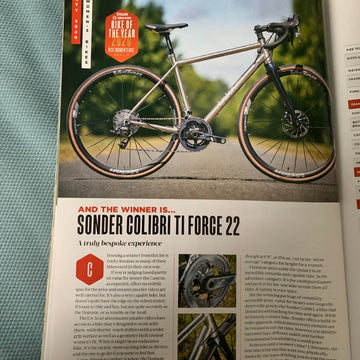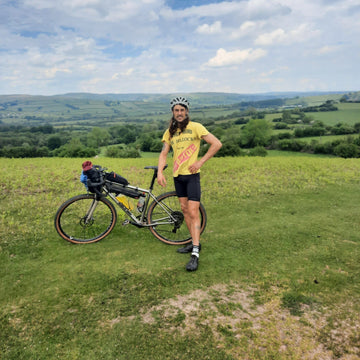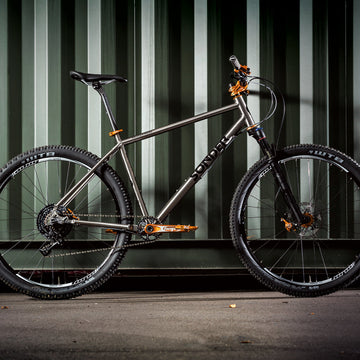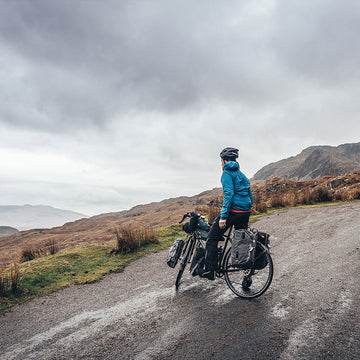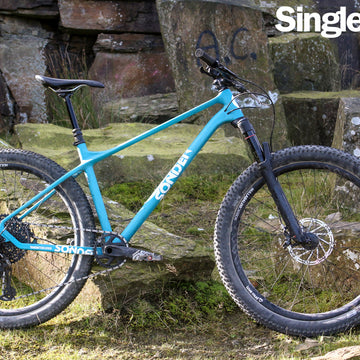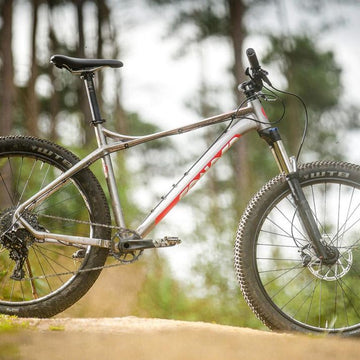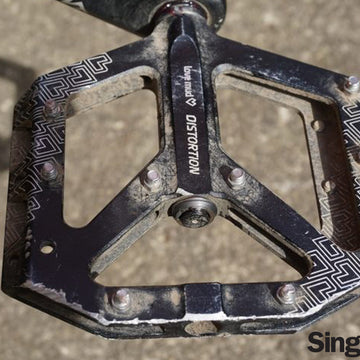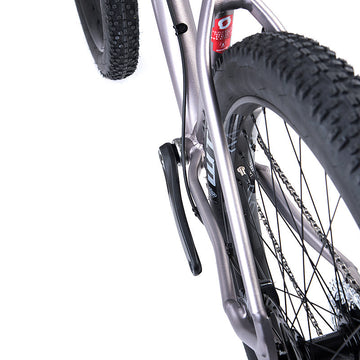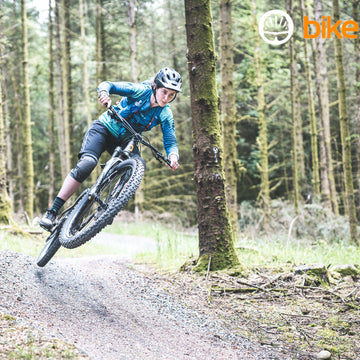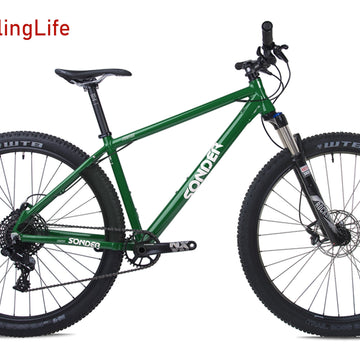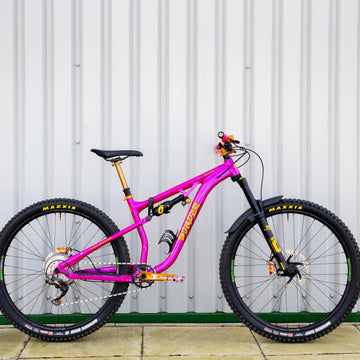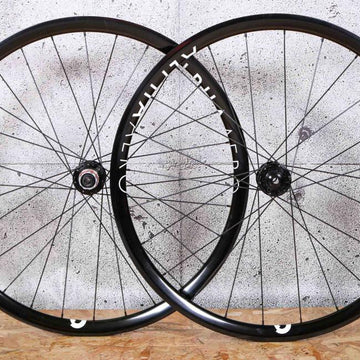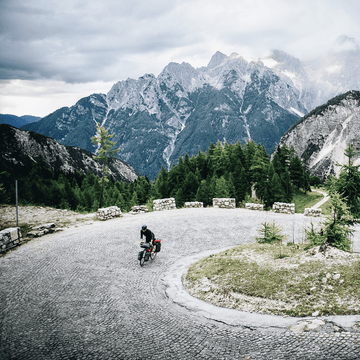
Read our expert guide on how to choose between a hardtail or full suspension mountain bike. Written by Sonder Rider Neil Cottam
Where to start? This is a tough one.
It isn’t as simple a question as it might seem. There are lots of factors that come into play when choosing your first mountain bike, or when looking to up the ante as your skill levels improve; the type of riding you expect to do and the terrain on which you are likely to do it are the most important.
Let’s start from scratch, break down the jargon, and take a look at the options shall we.

Hardtail Mountain Bikes
Hardtails have a rigid frame coupled with a front mounted suspension fork. They're usually light and nimble. Perfectly composed, and efficient on long climbs and wickedly fast on singletracks or more general terrain.
You will mostly find them made in Aluminium, Steel, Titanium, and Carbon options.
Pro’s: Lightweight. Easier to maintain. Usually cheaper than a full suspension bike.
Con’s: Generally not as comfortable for all day riding or rough terrain.

Full suspension mountain bikes
As the name implies, full suspension bikes are comprised of both front and rear suspension.
They are excellent on rougher terrain, comfortable to ride, and more forgiving of mistakes. Climbing on rougher trails is often easier on a full suspension bike too (extra grip), despite the extra weight. Different full suspension bikes have wide ranging capabilities and higher specification models are capable of tackling any kind of terrain.
Generally made from Aluminium or Carbon.
Pro’s: More comfortable. Better for rough terrain. More suitable for Trail Centres and Bike Parks.
Con’s: Heavier. Requires more maintenance. More expensive.

Match the Bike to the Rider and Terrain
The days of choosing between a cross country (XC) bike and a downhill rig are long gone. These days the lines between uses and disciplines are more vague; modern mountain bikes are extremely versatile with a broad cross-over.
XC and Downhill are still very much alive and well, however, most bikes, and riders, sit somewhere in that great big space in between – often referred to as Trail Riding.
General Purpose Trail Riding
Most suitable: Hardtails.
In order to get off-road it really is necessary to step away from generic High Street retailers such as Halfords etc; you are unlikely to get a bike capable of withstanding regular off-road use for a couple of hundred quid or so; poor quality components will fail very quickly and cheap suspension forks are just dreadful, in reality you need to be working with of budget of at least £600-700. In fact, if you're on a tight budget you would be better advised to buy a quality rigid bike rather than a cheaper hardtail or full-sus bike.
You want to be looking for something with about 100mm of fork travel, this will get you off road comfortably. These types of bikes are fun and easy to get used to, will be comfortable to ride on reasonable mixed terrain – think country parks, reservoir loops, old railway lines, and easier bridleways, right through to nice woodland singletracks and Trail Centre blue/green grades (Cannock Chase, Sherwood Pines etc).
These bikes are a friend for life and you'll still be whizzing to the pub on it when you’re 93.

Trail bikes: The Middle Ground
Most suitable: Both.
These are the unicorn bikes; super versatile, well suited to a broad range of terrain, riders, disciplines, and skill sets (including bikepackers, beginners, old hands, salty dogs, and some of those krazy kidz). These bikes are equally at home on easy trails as they are on the rowdier stuff.
These will generally have around 120-140mm of rear and/or front suspension travel and light enough to spend the whole day at the Trail Centre or munching quality miles in The Peak District.
These bikes are plenty capable of handling technical trails and Bike Park red runs – in the right hands they will tackle Bike Park and Trail Centre black runs with care. A lot of older riders opt for the added comfort of a mid-travel full suspension bike (or a Titanium hardtail).
Best for tougher bridleways, Peak District loops. South Downs Way. Trail Centre and Bike Park red runs. Bikepacking.
Aggressive Trail Bikes: Now we’re talking!
Most suitable: Both, but at the extreme end the full suspension bike really is King
These are the big guns of the trail, the bad boys, the roosters and boosters. Usable by, but perhaps not entirely suited to the beginner. The sort of bike you should consider after a couple of years of solid riding experience.
Suspension travel of around 140-180mm is a common feature. Highly capable bikes that can tackle any kind of terrain – in the right hands. Steep descents, rocky and technical singletrack, jumps and drops, Enduro, and Bike Park red and black runs, are where the long travel full suspension or hooligan hardtail really comes into its own.
These days I see a lot of riders out on the trail rocking big bikes, often up to 180mm of travel, most are over-gunned and would have a much better experience riding a mid-travel trail bike. The longer travel bikes can, and are, ridden regularly on general terrain and they're perfectly fine, but they really aren’t the one bike solution that many are looking for. Much better suited to the experienced and aggressive trail rider.
Choosing between an Hardtail or Full Suspension bike is really a matter of personal preference and budget. Consider what and where you will ride the most often and tailor your choice towards that; most bikes can be pushed to either end of the spectrum for that occasional sortie out of the ordinary. I’ve ridden my Signal Ti hardtail for uplift days at Bike Parks, and I’ve also spent the whole day riding less technical terrain on my Evol; both were perfectly fine.
Personally I love riding hardtails and spend most of my time on the Signal – it’s the best bike I’ve ever owned – but when the Evol comes off the wall I know that we’re heading for trouble (and probably Bike Park Wales).
What is really important is the joy that off-road riding can bring to our lives.
Try to select the bike most appropriate to you your circumstances and definitely buy the one that makes you go “phwoar!” even if it’s not necessarily ideal; because if you love your bike you will want to ride it. I’ve had my Signal Ti for almost three years and every time I go in the garage and see it hanging on the wall I go “Phwoar!” – I still get excited every time I ride it. Buy the one you love looking at the most and you’ll be a happy bicyclist, and if you happen to see my Signal Ti coming down the trail get out of the way quickly, I’ll have my pants on fire.

Sonder Mountain Bikes
Frontier SX Eagle Rigid
- SRAM SX Eagle 12-speed groupset
- Frontier Rigid fork
- Sonder Nova 27.5" or 29 XC wheelset
Frontier Deore Rigid
- Shimano Deore M6100 12-speed groupset
- Frontier Rigid fork
- Sonder Nova 27.5" or 29 XC wheelset
Frontier SX Eagle
- SRAM SX Eagle 12-speed groupset
- RockShox Recon Silver RL fork
- Sonder Nova 27.5" or 29 XC wheelset
Frontier NX Eagle
- SRAM NX Eagle 12-speed groupset
- RockShox Recon Silver RL fork
- Sonder Nova 27.5" or 29 XC wheelset
Frontier Deore
- Shimano Deore M6100 12-speed groupset
- RockShox Recon Silver RL fork
- Sonder Nova 27.5" or 29 XC wheelset
Transmitter SX Eagle
- SRAM SX Eagle 12-speed groupset
- RockShox Recon Silver RL fork
- Sonder Nova 27.5" wheelset
Transmitter NX Eagle
- SRAM NX Eagle 12-speed groupset
- RockShox Revelation RC fork
- Sonder Nova 27.5" wheelset
Transmitter GX Eagle
- SRAM GX Eagle 12-speed groupset
- RockShox Lyrik Ultimate RC2 fork
- Sonder Alpha 27.5" UK Made wheelset
Transmitter Deore
- Shimano Deore M6100 12-speed groupset
- RockShox Recon Silver RL fork
- Sonder Nova 27.5" UK Made wheelset
Transmitter XT
- Shimano XT M8100 12-speed groupset
- RockShox Lyrik Ultimate RC2 fork
- Sonder Alpha 27.5" UK Made wheelset
